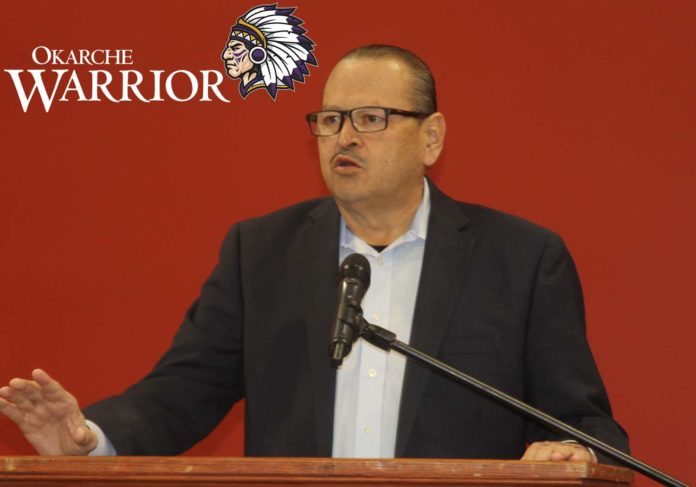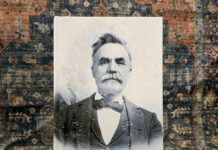By Ray Dyer
El Reno Tribune
In a somber but hope-filled ceremony, the Cheyenne and Arapaho Tribes dedicated a monument to their ancestors killed at Sand Creek in 1864 and celebrated an historic blanket owned by a chief who died at the site of the Colorado massacre.
C&A Gov. Reggie Wassana said in welcoming the blanket of Chief White Antelope to Concho, the journey of his people continues. White Antelope was among the more than 230 Cheyenne and Arapaho men, women and children who were killed by U.S. Cavalry soldiers on Nov. 29, 1864, at what is known as the Sand Creek Massacre. Located in southwest Colorado, Sand Creek is now a National Historic Site.
Lt. Gov. Gib Miles told an audience of more than 100 that he originally had no intention of looking at the blanket. He said he had a “vivid image” of how a soldier ended up with the blanket.
Miles said in his vision he saw a soldier “reaching under the lifeless body of White Antelope and pulling the blanket from beneath him.
“White Antelope rolled and rolled as the blanket was pulled from beneath him,” Miles said.
He said it was a “good thing” that the blanket made its way to Concho, but how it arrived here “was not a good thing.”
Cheyenne Chief Gordon Yellowman served as master of ceremonies for the gathering. He said Chief White Antelope’s blanket first visited Oklahoma in 1996 when it was welcomed to an Indian Baptist Church in Watonga.

On that day, Yellowman said a relative of White Antelope asked the blanket curator why there were not three bullet holes in the blanket.
“The curator said that was correct, there were three bullet holes, but the holes had been repaired,” Yellowman said. He said at that moment it began to snow.
“The day White Antelope was shot down it was snowing,” Yellowman said. “We took that as a good sign.”
Yellowman said research into the blanket showed it had traveled many directions since it was taken from White Antelope. He said a stagecoach driver in Colorado once had possession of the blanket.
Wassana said the journey of White Antelope’s blanket is the journey of the Cheyenne and Arapaho people. Two separate tribes, but always there for one another.
“We are a resilient people,” Wassana said.
He said many events occurred leading up to last week’s ceremony. Wassana pointed to Sand Creek, which he said led to the Washita Massacre in western Oklahoma and finally Little Big Horn.
“No doubt there were skirmishes that claimed the lives of many others
that did not make the history books,” Wassana said.
Fred Mosqueda served as the Arapaho coordinator for the Sand Creek Monument, while Chester Whiteman was the Cheyenne coordinator. Both said the monument “represents our people.”
“Look at the monument and see where you are tied in,” Whiteman said. “Be proud of who you are.”
White Antelope’s blanket was brought to Concho by the Indian Arts Research Center in Santa Fe, New Mexico. The hope is to one day return it permanently to the Cheyenne and Arapaho people.
Eliff-Cruz said C&A leaders are discussing ways to bring the blanket and other C&A artifacts to the tribal headquarters.







